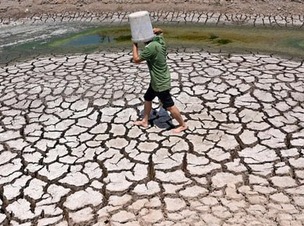Hot button : On the voter and heat Exposure
Voters must be incentivised by minimising risks due to heat exposure
The Election Commission of India (ECI) suspects ambient heat dissuaded voters from turning out in greater numbers during the first phase of the general election, on April 19. It has since constituted a task force with representatives from itself, the India Meteorological Department (IMD), the Ministry of Health and Family Welfare, and the National Disaster Management Authority to assess local heat and humidity for five days before each phase of polling and work with State electoral apparatuses to ensure adequate facilities at booths . The IMD declares heat wave conditions in a region depending on whether one of a few conditions is met , centred on deviations of the daytime temperature from the decade -long average. But these declarations are not concerned with the people’s experience of ambient heat . Even without a heat wave, people of all ages are at significant risk if the relative humidity increases the wet-bulb temperature beyond 30°C and they spend more than a few minutes outdoors. Heat can also accumulate and persist in some locations more than others. For example, semi-planned or unplanned areas can exacerbate the risk of heat-stress through poor ventilation , crowding, not installing Shaded resting spots, and overlooking heat radiated by asphalt surfaces .
Getting more people to vote is like getting more children to school, which the midday meal scheme contributed significantly to. The ECI would do well to implement similar measures to incentivise voting by minimising heat exposure. The physiological adversity a voter may suffer when commuting between home and polling booth can be controlled to a limited extent by tweaking the polling dates and hours. ( In the same vein , rescheduling the elections to non-summer months may spare voters the heat but not the wrath of some other elements.) The task force must ensure every booth has shaded waiting areas with seating; air flow; oral rehydration options; sanitary facilities; fruits; updated first-aid kits; wheelchairs; accessible architecture ; and medical services every dozen booths or so. Some additional needs go beyond the task force. For example, the ECI’s pledge to increase voters’ awareness of heat management protocols and provisions at booths should not encroach on the duties or resources of the Accredited Social Health Activists , and must instead bank on a separate cadre. The Health Ministry must also collect and share data about heat-related morbidity and mortality as well as reconcile its numbers with those of the National Crime Records Bureau, so that officials can identify problems and institute reliable long-term countermeasures .
